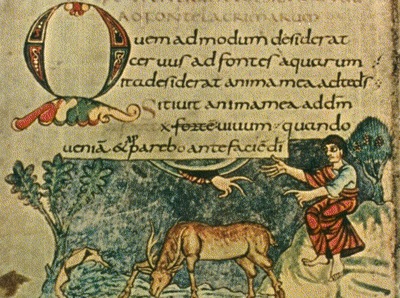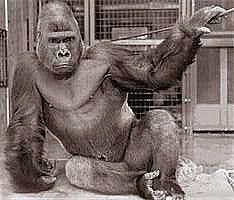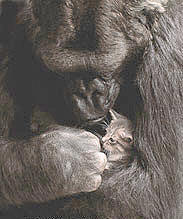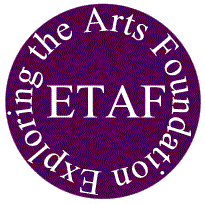

|
| ||||||||||||||||||||||||||||||||||||||||||||||||||||||||||||||||||||||||||||||||||||||||||||||||
|
||||||||||||||||||||||||||||||||||||||||||||||||||||||||||||||||||||||||||||||||||||||||||||||||
|
| ||||||||||||||||||||||||||||||||||||||||||||||||||||||||||||||||||||||||||||||||||||||||||||||||

can we talk to the Animals?Here, The Muse Of Language Arts offers a demonstration that interspecies verbal communication exits and can take place between: 1) humans and nonhuman animals, and 2) between nonhuman animals of the same species. Can art be communicated between humans and other species?
What are interspecies and intraspecies communication?Interspecies communication is communication of al sorts that exists and occurs between different animal species, between different plant species, and between different animal and plant species. It is distinguished from, but related to intraspecies communication, which is communication that exists and occurs between two or more animals of the same species or between plants of the same species.
Although these are fascinating subjects for contemplation in all their respects, in these pages The Muse Of Language Arts is primarily interested in these fields of exploration for what they can reveal about aspects of human language (verbal communication), that is, communication by voice in the distinctively human manner, using arbitrary sounds in conventional ways with conventional meanings—in other words, writing or speech. Can we talk to the animals?Can people talk to animals the way Rex Harrison or Eddie Murphy do in their Doctor Doolittle movies? Can people talk to animals the way the character of Doctor John Doolittle talks to animals in the famous children's books by Hugh Lofting? Can the animals talk back? If we can converse with the animals, can art or music be communicated between humans and other species? Here, The Muse demonstrates that animals can:
Can animals produce The Muse is also interested in interspecies communication and and the other arts Many people doubt whether nonhuman animals can communicate among themselves or with humans by means of language. The Muse is not so sure. On the page you are now reading, The Muse Of Language Arts seeks to establish the credibility of communication between species by means of language. The principle at work in the Muse's demonstration is as follows: If it can be demonstrated that two species actually do employ language to communicate, or if it can be demonstrated that two individual nonhuman animals communicate with each other or with humans, then the principle of the possibility of interspecies communication is established, Q.E.D. Animal language occurs among many different species and takes many forms. Exploring language among and between species is a complex undertaking; it is a scientific and philosophical specialty in its own right. Here, The Muse only seeks to describe one or two examples to establish the fact that communication between species does take place.
the nature of languageLanguage is both an art form and a means by which art is communicated. In a sense, all art forms are languages because they communicates ideas, emotions, thoughts, and feelings. Here, The Muse Of Language Arts primarily addresses the subject of verbal communication by and between animals of the same or different species, and secondarily examines language as a form of art. Language is:
| ||||||||||||||||||||||||||||||||||||||||||||||||||||||||||||||||||||||||||||||||||||||||||||||||
| Object | Koko's Invented Name in ASL |
| batman mask | eye hat |
| ring | finger bracelet |
| game of hide and seek | quiet chase |
| toy zebra | white tiger |
| magnet stuck to a metallic object | stuck metal |
| pipe that smells like tobacco | grass bottle |
| frozen berry | cold hard |
| frozen banana | fruit lollipop ice cream |
| caramel apple on a stick | lollipop food tree apple |
| tweezers |
pick face (Koko makes the pick face sign on her face) |
| pineapple | potato apple fruit |
| tapioca | milk candy |
| ice cream | my cold cup |
| large brown envelope | stamp bag |
Observer’s note that the sounds humans make when they speak to Koko (phonetics) seem to play a part her choice of signs.
In recent years, Koko has been taught to recognize the meaning of simple words printed on plastic food container lids, as well as phrases written on small decorated cards. Koko rummages through the lids or cards and picks out the one that carries the message she wants to send, phrases like please bring flowers or time to sleep now.
As well as recognizing signs, Koko hears and understands many of the words her human and nonhuman friends speak; but of course she doesn’t posses the biological requisites to speak herself. But even in the absence of a verbal apparatus of her own she has learned to express herself through signs and vocalizations. Koko may not read, write, or speak in the usual sense, as humans do, using eyes, vocal chords, and good penmanship, but it would seem that she “talks” and “reads” nonetheless.
Over the years, Koko has had two major companion gorilla friends named Michael and Ndume, whom she taught sign language. She and Michael have used language to tell jokes to each other, lie, and to communicate in other ways without human intervention.
Koko, Michael, and Ndume have more in common than signing
to each other; they all paint expressive pictures. Michael was especially
talented in this regard. Their works have been shown in galleries and sold
at auction, some for large sums of money. Of course, artistic painting is a form
of linguistic communication even though it is non-verbal. See samples of gorilla art work at the Gorilla Foundation web site.
See samples of gorilla art work at the Gorilla Foundation web site.
At right, Michael with paintbrush in hand. He died in 1999.
Koko is very found of kittens, whom she treats gently and lovingly. At one point, she adopted a kitten whom she named All Ball. When All Ball died tragically, she grieved deeply. The story of All Ball is told in the book, Koko’s Kitten, written for children.
Note that Koko never had the benefit of a formal course in grammar; never read a grammar text, style guide, or a book of any kind; never had a formal grammar lesson from a teacher; yet she is capable of successful communication with her human and nonhuman friends. In essence, Koko and her friends “speak the same language.”
How does Koko compare with other animal species as far as linguistic abilities are concerned? The fact of animal communication is not itself either new or remarkable; it is well established. Animals of a given species communicate with other animals of the same species, as well as with animals of different species. For instance, ants and other, more complex animals communicate by means of chemicals called pheromones
At the left, below, Koko with her kitten, All Ball.
 The animal kingdom employs many different kinds of
communication. For example, bees communicate by “dancing.” Body language
behaviors such as dancing are not the only way animals communicate
non-verbally. Other such means used by animals include odors, postures, and
sounds. Humans employ many of these techniques; as well. In some cases,
humans send non-verbal “messages” that are equivalent to or virtually
equivalent to those sent by other animals; in other cases, the messages they
send are more complex. For example, have you ever seen two humans glare at
each other in a staring contest? Have you seen two humans “butt heads?”
The animal kingdom employs many different kinds of
communication. For example, bees communicate by “dancing.” Body language
behaviors such as dancing are not the only way animals communicate
non-verbally. Other such means used by animals include odors, postures, and
sounds. Humans employ many of these techniques; as well. In some cases,
humans send non-verbal “messages” that are equivalent to or virtually
equivalent to those sent by other animals; in other cases, the messages they
send are more complex. For example, have you ever seen two humans glare at
each other in a staring contest? Have you seen two humans “butt heads?”
However, it is important to realize that Koko’s use of ASL is different from forms of communication that take place among the lower animals. Unlike the communication techniques demonstrated by these other animal species, Koko and her hman and nonhuman friends exploit and employ grammar, semantics, symbols, and logic. The inevitable conclusion: Koko and her friends are intelligent, verbal creatures who employ language to communicate ideas.
How does Koko's use of language compare with that of humans? Her “speech” does seem to adequately express the range of thoughts, ideas, and emotions lodged in her mind and to accurately reflect a world view resembling that exhibited by most humans; but her brain does not equal that of the human brain for its ability to deal with abstract ideas, to reason, to experience sensations, etc. However, it's clear that, though similar in kind to human linguistic faculties, her language abilities do not approach those of a typical human in degree, precision, or scope; and she does not employ all the same categories of thought.
One observer has appraised Koko’s linguistic abilities by saying that they roughly compare with those of a normally developed 10-year old human being, but such an appraisal is difficult to assess because there is no accepted scale for precisely rating the verbal abilities of humans or animals. While comparatively little scientific work has been done to quantify this supposition objectively, it seems reasonable to conclude that whatever Koko’s verbal abilities actually may be, they fall somewhere between those of an infant and those of a normal human pre-schooler.
Koko is not alone in her ability to speak. Other examples of exceptional nonhuman primate verbal communication are well known to scientists working in this field. For example, a female chimpanzee named Washoe, who was taught ASL in the 1960s by Allen and Beatrice Gardner, is also a famous case. Their work inspired Dr. Penny Patterson to begin her work with Koko in 1972. These are not isolated cases; other primate individuals have been taught to ”converse” with humans, given appropriate training, and there is no reason to believe that a capacity for speech is not an innate property of primates as a whole.
There also have been numerous promising studies of the innate language abilities of birds, dogs, cats, dolphins, whales, and other animal species, some of which have yielded surprising and encouraging results. New examples of species having an innate capacity for language communication are liable to surface at any time. And the discovery of new kinds and degrees of language faculties seem inevitable.
But much work needs to be done before the question of whether nonhuman animals can talk can be fully resolved. The precise nature and extent of animal interspecies communication must be charted for each species. Advances in linguistic theory must be made and applied to the practical study of nonhuman animals before this currently-turbid world can be fully revealed.
Learn more about Dr. Patterson's ongoing experiments with Koko and her friends at the Gorilla Foundation web site:
Visit the Gorilla Foundation web site now: click here.
Send email to Koko now: click here.
Write the Gorilla Foundation at Box 620530, Woodside CA, 94062-0530.
Check out the essay called Is There Really Such a Thing as Writing Right? at The Muse Of Language Arts page called Welcome To Publish Your Essay. It has lots to add to the subject of how humans and nonhumans communicate via language: click here.
Writing Right is an ETAF app product that makes it easy to catch and correct all sorts of writing mistakes. Fix them while you are writing or editing. It also helps you to a better writing style. The Writing Right White Paper is a free white paper that explains the theory behind Writing Right. It has lots to add to the subject of how humans and nonhumans and nonhumans communicate via language:
Koko's Kitten tells the touching story of Koko and her kitten, All Ball, in DVD format, in a style that is is suitable for children of pre-school and lower grammar school ages. It incorporates actual footage of Koko's interaction with All Ball before, during, and after the cat's tragic death. This material, filmed by Dr. Patterson's associate, Dr. Ron Cohn, is a skillful combination actual footage taken by Dr. Cohn at the time that the real events unfolded, with reenacted and reconstructed film sequences showing the real-life characters in action.
Imagine a children's book transformed into a smoothly-acted performance come to life; it's like being there. This DVD is available at or through your local library. At last look, it was still available for purchase at the Discovery Channel online store.
Other books and DVDs about KoKo:
The story of All Ball is told in the book, Koko’s Kitten, written for children. |
A children's book about Koko and her relationship with Dr. Patterson. Also suitable for adults. |
A documentary DVD about Koko recompiled from movies of actual ASL training sessions filmed about 10 years after the start of Project Koko. Also contains a few brief scenes from the Washoe ASL project. |
A DVD about all aspects of the history of Project Koko up to about 2004. Shows ASL conversations between KoKo, other gorillas, and Dr. Paterson. Insights into animal-human psychology. Also published in a version narrated by Martin Sheen. |
A DVD about the nature of all forms of communication between nonhuman animals and humans, including verbal communication. |
A DVD about nonhuman animal consciousness, thinking, emotions, and feeling, and their similarity to man. |
|
|
Search this web site with Electricka's Search Tool:
tap or click here
Electricka's Theme Products
Shop At Cafe Press
This web site and
its contents are copyrighted by
Decision Consulting Incorporated (DCI).
All rights reserved.
Contact Us
Print This Page
Add
This Page To Your Favorites (type <Ctrl> D)


You may reproduce this page for your personal
use or for non-commercial distribution. All copies must include this
copyright statement.
—Additional
copyright and trademark notices—
| Exploring the Arts Foundation |
 |
| Today's Special Feature |
| Search Now |
| To Do | |||||
|
| Related Pages |
| Our Blogs |
| Our Forums | ||
|
|
Resource Shelf |
| ETAF-Amazon |
|
|